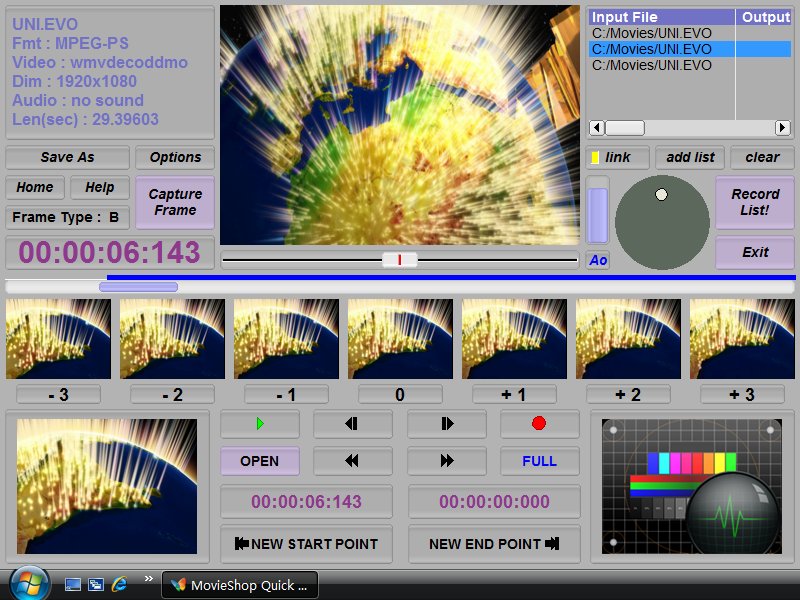

We encourage you to try other Linux video editors such as Shotcut, Kdenlive, Flowblade, OpenShot, PiTiVi, LiVES, and LightWorks.Cut, a way to help manage large video files, may not sound like a key factor that makes video editor software compelling, but it is definitely one of the basic features that no one would miss. Kino has not been actively maintained since 2009. I do find it crashes a fair bit (I use Ubuntu 15.04 Kino v1.3.4) but it will recover where you were upon restart.

I found that it is hard to find the exact spot to cut the scene in Kino and when I play the vid in the built in player there is no sound (there is when exported) and it plays too fast so I play the video in avidemux, find the time or frame number where I want to cut it, then use this info in Kino. You can even add effects like titles to each clip. Works great and is fast, the slowest part is the initial import of the video file. You will have to import the file as Kino needs it in dv format (whatever that is) and you can then specify start and end point for each clip on the Edit tab, then export each clip individually on the Export tab.

After trying to do this in the usual suspects all listed by others here I ended up using Kino. I've struggled with this same issue, having a large video file that I want to cut and save as separate scenes. Select the file, then enter the time for start and end of the cut/crop Then it can be run with an app launcher like Synapse: Than create the file ~/.local/share/applications/sktop similar to: Ĭategories=GNOME GTK Settings HardwareSettings X-GNOME-Settings-Panel System
#MP4 VIDEO CUTTER ONLINE FREE INSTALL#
So, install yad, save the script as cut_audio-video.sh and make it executable. # Get 5 minutes of video starting at 2 minutes inĮcho "Example: $(basename - "$0") input.mp3 -5:00" >&2 Usageįfslice infile ]]] Examples # Get the last 5 minutes of an MP3 I wrote a helper for ffmpeg that mimics substr() syntax. Or avconv -ss 0 -i source.m4v -t 100 -vcodec copy -acodec copy part1.m4vĪvconv -ss 100 -i source.m4v -t 100 -vcodec copy -acodec copy part2.m4vĪvconv -ss 200 -i source.m4v -t 100 -vcodec copy -acodec copy part3.m4vĪvconv -ss 300 -i source.m4v -t 100 -vcodec copy -acodec copy part4.m4v Or ffmpeg -ss 0 -t 100 -i source.m4v -vcodec copy -acodec copy part1.m4vįfmpeg -ss 100 -t 100 -i source.m4v -vcodec copy -acodec copy part2.m4vįfmpeg -ss 200 -t 100 -i source.m4v -vcodec copy -acodec copy part3.m4vįfmpeg -ss 300 -t 100 -i source.m4v -vcodec copy -acodec copy part4.m4vĪVCONV avconv -i input.avi -vcodec copy -acodec copy -ss 00:00:00 -t 00:30:00 output1.aviĪvconv -i input.avi -vcodec copy -acodec copy -ss 00:30:00 -t 00:30:00 output2.aviĪvconv -i input.avi -vcodec copy -acodec copy -ss 01:00:00 -t 00:30:00 output3.avi For example:įFMPEG ffmpeg -ss 00:00:00 -t 00:30:00 -i input.avi -vcodec copy -acodec copy output1.aviįfmpeg -ss 00:30:00 -t 00:30:00 -i input.avi -vcodec copy -acodec copy output2.aviįfmpeg -ss 01:00:00 -t 00:30:00 -i input.avi -vcodec copy -acodec copy output3.avi I was going to mention commands like ffmpeg or avconv (The new one) which can OBVIOUSLY split files into groups.


 0 kommentar(er)
0 kommentar(er)
